
 |
The sea is very important to the Beara Peninsula. Follow the buttons here to find out all about it!
The Sea is the peninsula's most important natural resource as many people earn a living from the sea. The fishermen of the Beara Peninsula work very hard to make a living off the sea. It is a very difficult job as they must work very long hours on the boat. If they are deep sea fishermen or trawlermen they often work in the middle of the ocean for months at a time, This means that they might not see their families for a very long time. Go to the Gallery to see some pictures of the fishermen at work in the peninsula or click on the images here as well! |
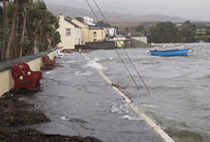 |
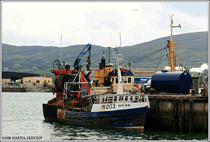 |
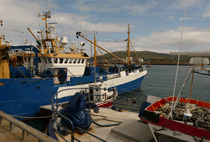 |
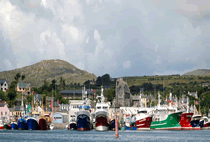 |
But what sort of fish do they catch in the Beara Peninsula?
MACKERAL Mackeral can be found in warm tropical waters as well as the icy seas of the Atlantic. It is an oily fish that is rich in a mineral called Omega 3. Omega 3 minerals are said to boost your brain power - Yum, yum then! Depending on the species, Mackerals can be lots of different colours. However, they are very easy to recognise as they always have stripes on their body. They have no big fins - just lots of small little fins instead. The largest species of Mackerel is the King Mackerel which can grow to 66 inches (1.68 m). Wow! A female mackeral lays about 1,000,000 eggs at a time. |
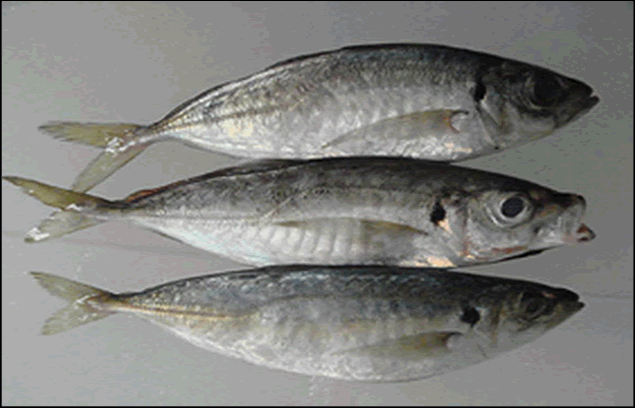 |
CRAB Shellfish are very popular things to eat in restaurants. There are lost of different type of shellfish like prawns, lobsters and whelks. Crabs are a type of shellfish as well. Crabs are generally covered with a thick shell called an exoskeleton. They also have a very strong pair of claews. The scientific name for these claws are chelae. Crabs are found in all of the world's oceans and many crabs live in freshwater and on land. This means that they are very easy to catch. Crabs can be very big or very small. They can be a few millimetres wide like the Pea Crab or up to 4 metres wide like the Japanese Spider Crab. |
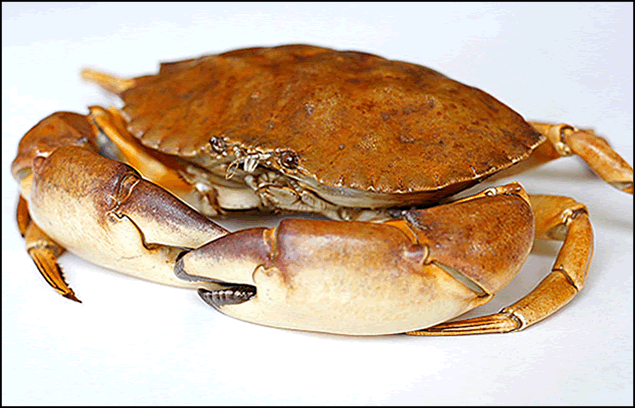 |
SALMON Salmon is also a very popular fish to eat in Ireland. This fish can be either wild or farmed. Wild salmon are caught out in the middle of the ocean. Farmed salmon are brought up under the watchful eye of a fish farmer before they are caught and sold. Salmons also have a very unusual lifecycle. They are first born in a freshwater river. Then, once they have grown up, they leave this river and migrate out into the ocean. When it is time for the slamon to lay their own eggs, they will then return back to the SAME river that they were born in and lay their eggs there. No matter how far away their 'home' river is, the salmon will ALWAYS go back to that river to lay their eggs. Nobody quite knowshow they do this yet. |
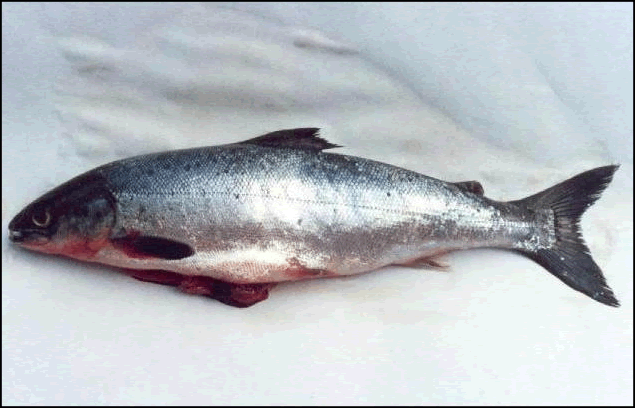 |
WHITING The latin name for whiting is Merlangus. This type of fish is plentiful in the North Sea as well as the Atlantic Ocean. Most of the boats in Beara fish for whiting when it is in season. Whiting is easy to recognise because it has some very distinctive cololurs on different parts of its body. It has yellowish fins and a black tailfin. Cod is a type of Whiting. However, very few boats fish for cod at the moment as it is a protected species. Over-fishing in the last century caused the number of cod to fall dramatically. Until the fish stocks for cod rise again, boats cannot fish for cod in the North Sea. |
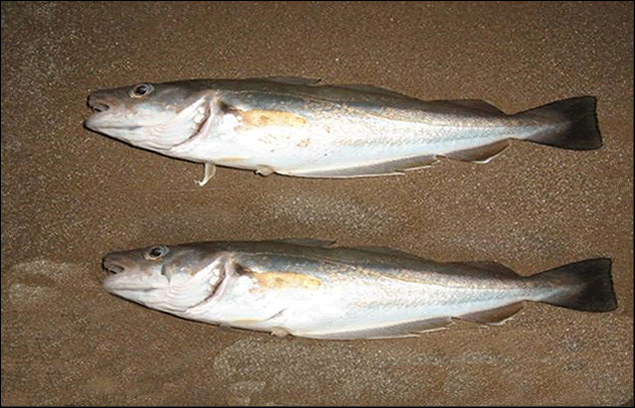 |
The sea can be a very dangerous place to work. The Beara Peninsula is right next to the Atlantic Ocean and storms can happen very quickly here. On land, storms can, sometimes, be a little scary. Out at sea, they can be terrifying.
Sometimes, if the storm is very powerful then, the fishermen can be in a lot of danger. The boat may flood and capsize or, if the waves are very high, a fisherman may be lost overboard. If any of these things ever happen, the fisherman must always radio to shore to ask for help.
But who helps them in these very dangerous conditions?
The Lifeboat does.
The Royal National Lifeboat Institute is a voluntary organisation that buys orange rescue boats for coastal areas. These boats will always go out to help boats in need, no matter how dangerous the conditions.
The Castletownbere Lifeboat is in charge of helping any boats that may get into distress around the Beara Peninsula. The Castletownbere Lifeboat first came to Beara in 1998 and since then it has helped to save hundreds of lives. The name of this boat is the the 'Roy and Barbara Harding' and it was named after the people who first started the campaign to buy the Beara Peninsula its own lifeboat.
You can find out more about the Castletownbere Lifeboat by going to its web-page here.
Watch the video below to find out more about the lifeboats in general!
We know that the sea can be dangerous but if we are careful we can have a lot of fun as well!
You can do a lot of different things on the water and by the coast and seashore of the Beara Peninsula. You can go to Ballydonegan beach in Allihies or you can go swimming by Tralahan in Castletownbere.
Water Sports are very popular too in Beara, espescially the following:
Kayaking
Sailing
Rowing
Yachting
Water Skiing
Look at the photos to see what other people have done on the water in Beara at the Sailing Centre in Adrigole!